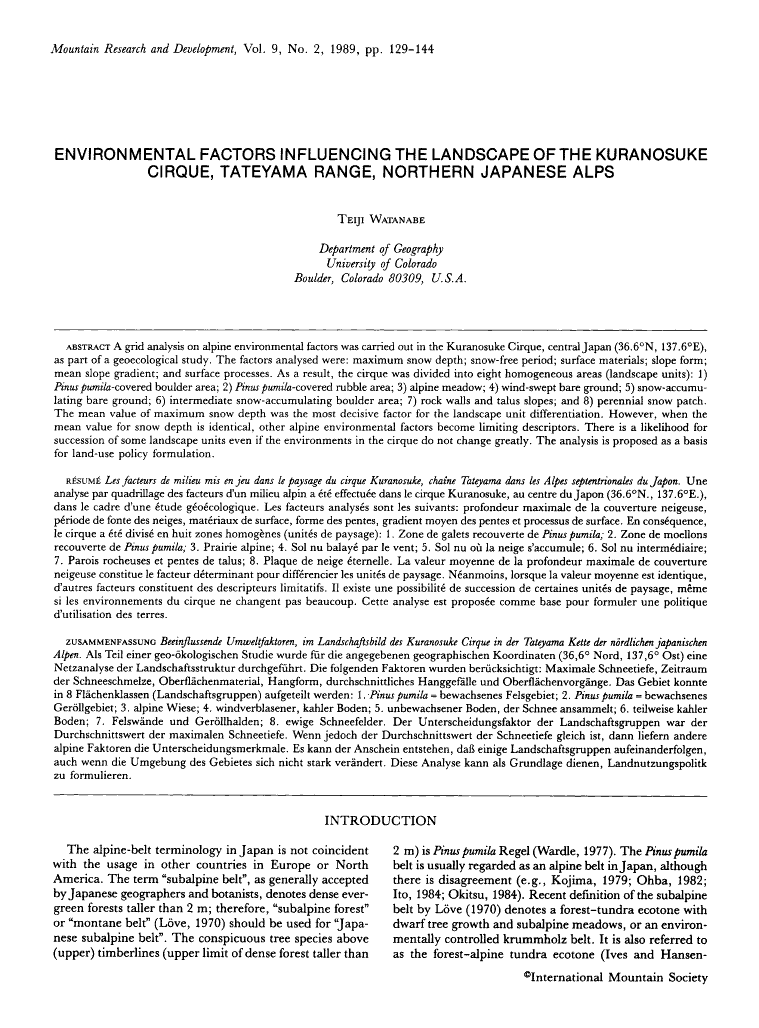
A grid analysis on alpine environmental factors was carried out in the Kuranosuke Cirque, central Japan (36.6°N, 137.6°E), as part of a geoecological study. The factors analysed were: maximum snow depth; snow-free period; surface materials; slope form; mean slope gradient; and surface processes. As a result, the cirque was divided into eight homogeneous areas (landscape units): 1) Pinus pumila-covered boulder area; 2) Pinus pumila-covered rubble area; 3) alpine meadow; 4) wind-swept bare ground; 5) snow-accumulating bare ground; 6) intermediate snow-accumulating boulder area; 7) rock walls and talus slopes; and 8) perennial snow patch. The mean value of maximum snow depth was the most decisive factor for the landscape unit differentiation. However, when the mean value for snow depth is identical, other alpine environmental factors become limiting descriptors. There is a likelihood for succession of some landscape units even if the environments in the cirque do not change greatly. The analysis is proposed as a basis for land-use policy formulation.